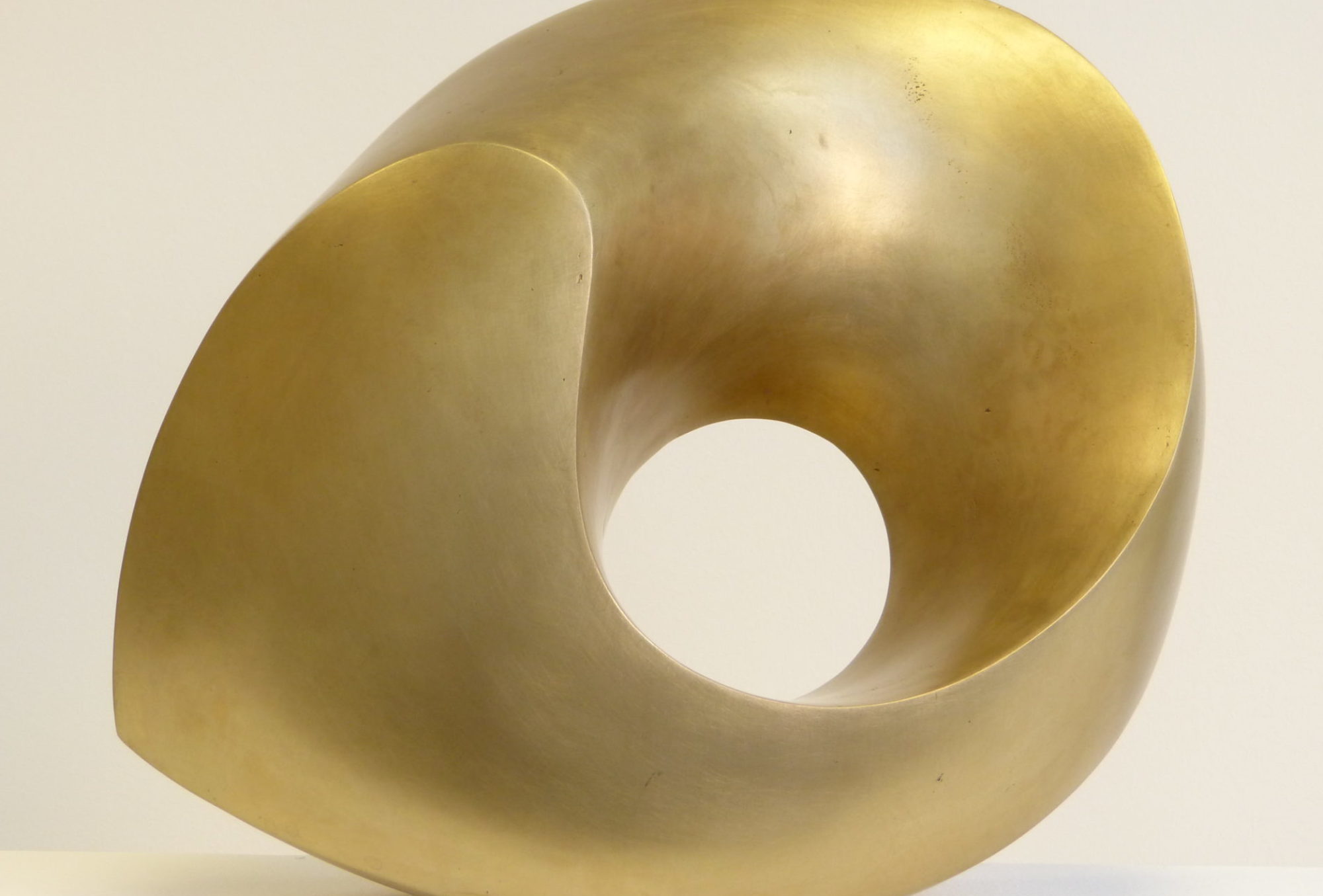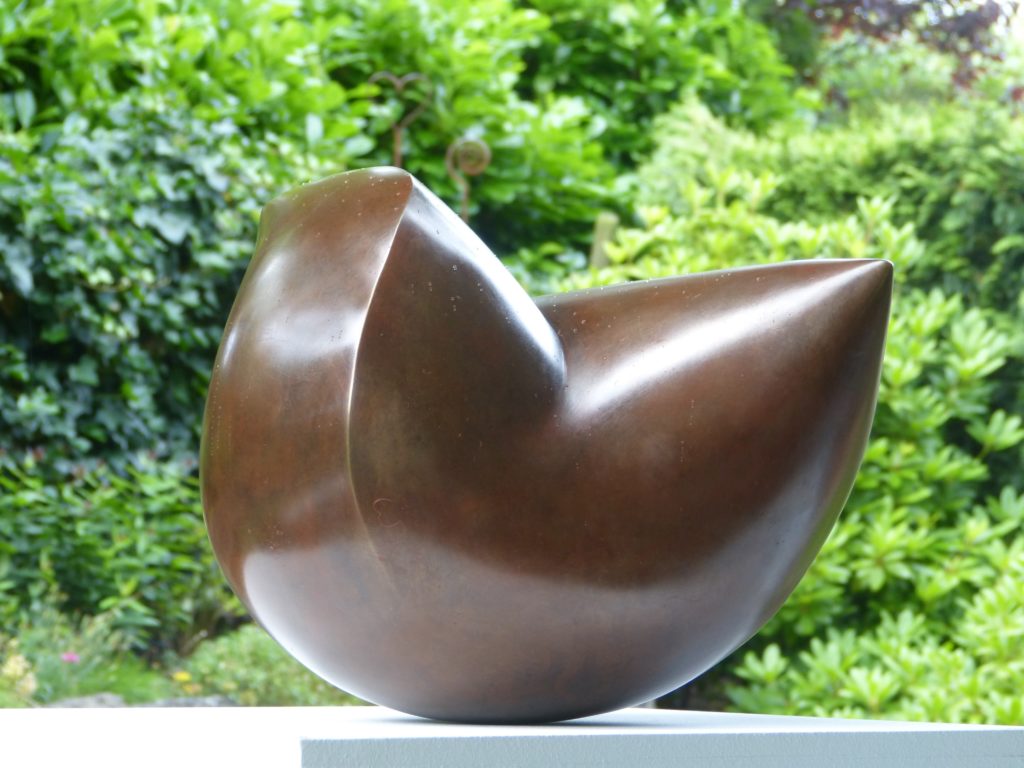
Only recently did I pick up the second cast of the bronze sculpture Two Points from the foundry. And it already found a new home again. Even if I'm happy that it is now pleasing someone else, I still miss it in the studio. This seemingly simple shape has a very special charisma.
It's a long way from the first drafts to the finished sculpture. The following photos of the making of the bronze sculpture Two Points show only a small part of this path.
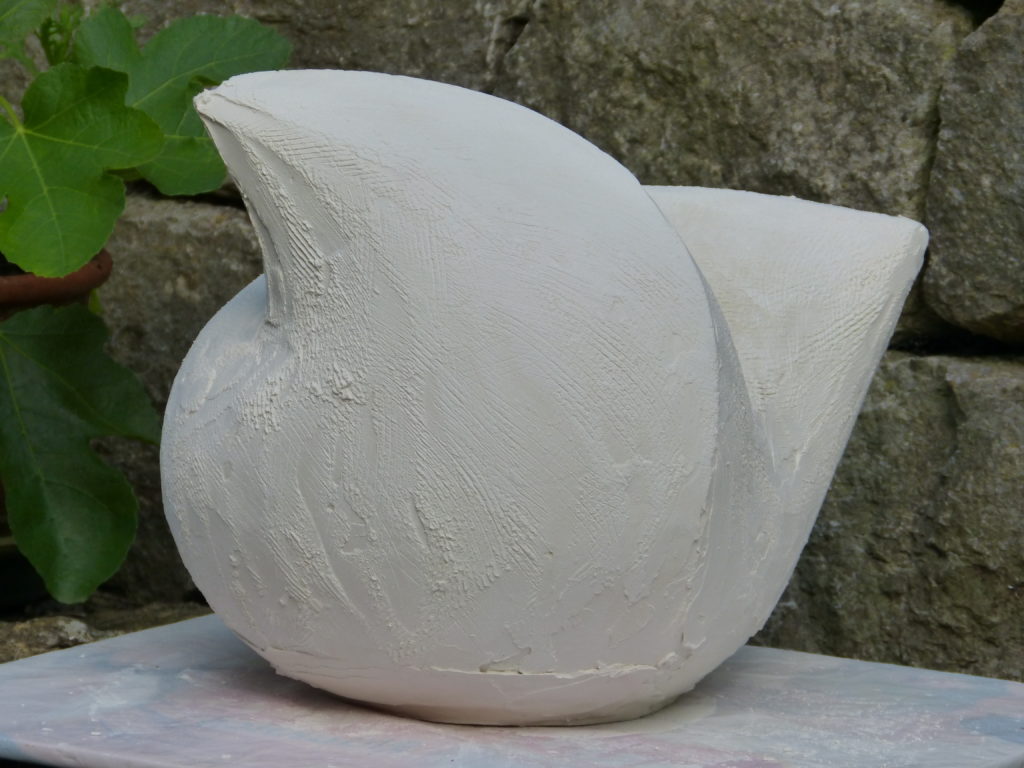
Design in plaster
I put a layer of plaster over a core made of styrofoam. The shape of the sculpture has already been found, but the surface is still very roughly worked.
Plaster model
I keep applying plaster of paris and sanding it down until the shape is really right. When the plaster model is finished, I use it to create the negative form.
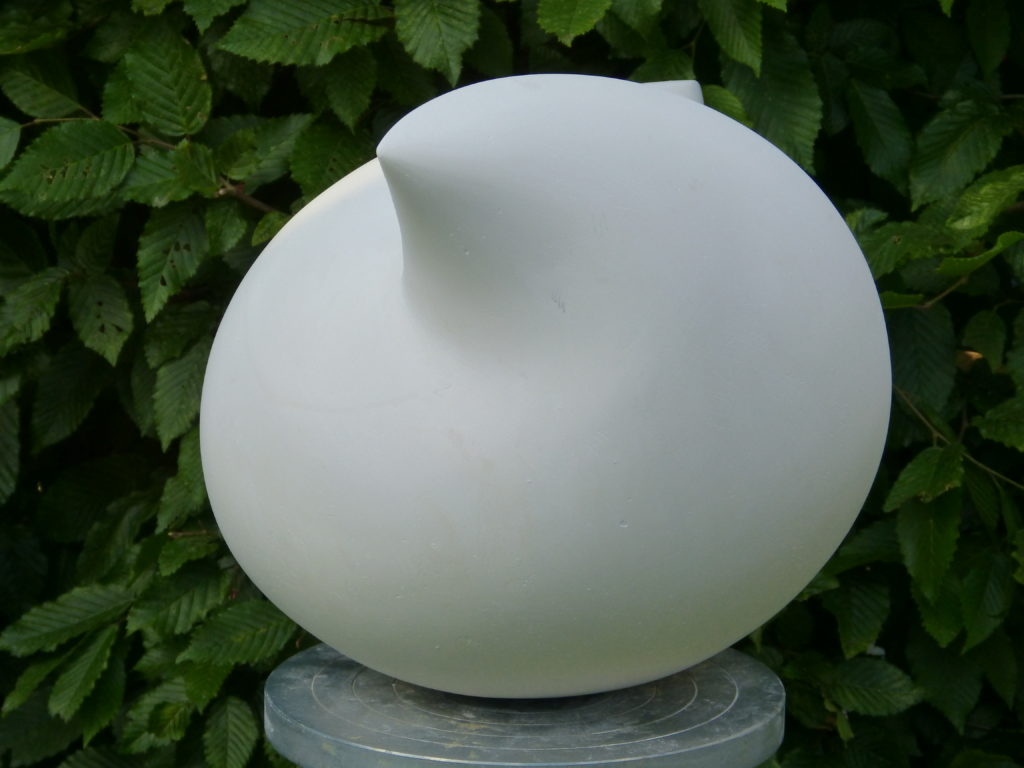
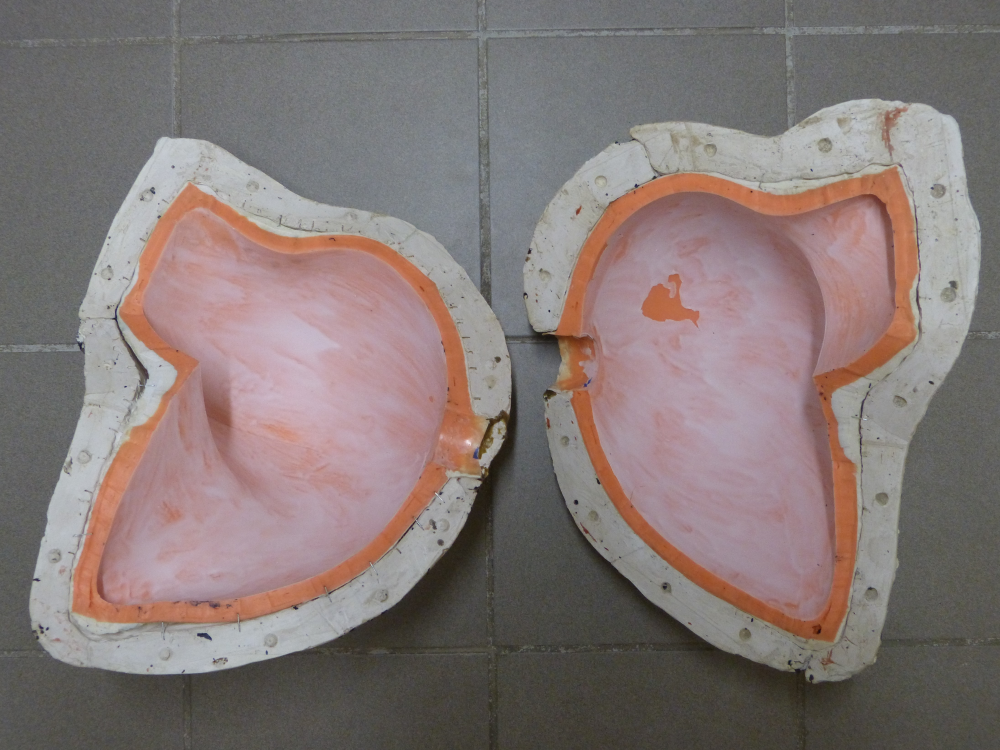
The mold
The mold consists of an inner, soft silicone form and an outer support form made of plaster of paris. It is made around the model. Its most important property is therefore that it can be removed from the model without destroying it. In this case, two parts are sufficient. I take the negative mold and model to the foundry to have a bronze cast made of the sculpture Two Points .
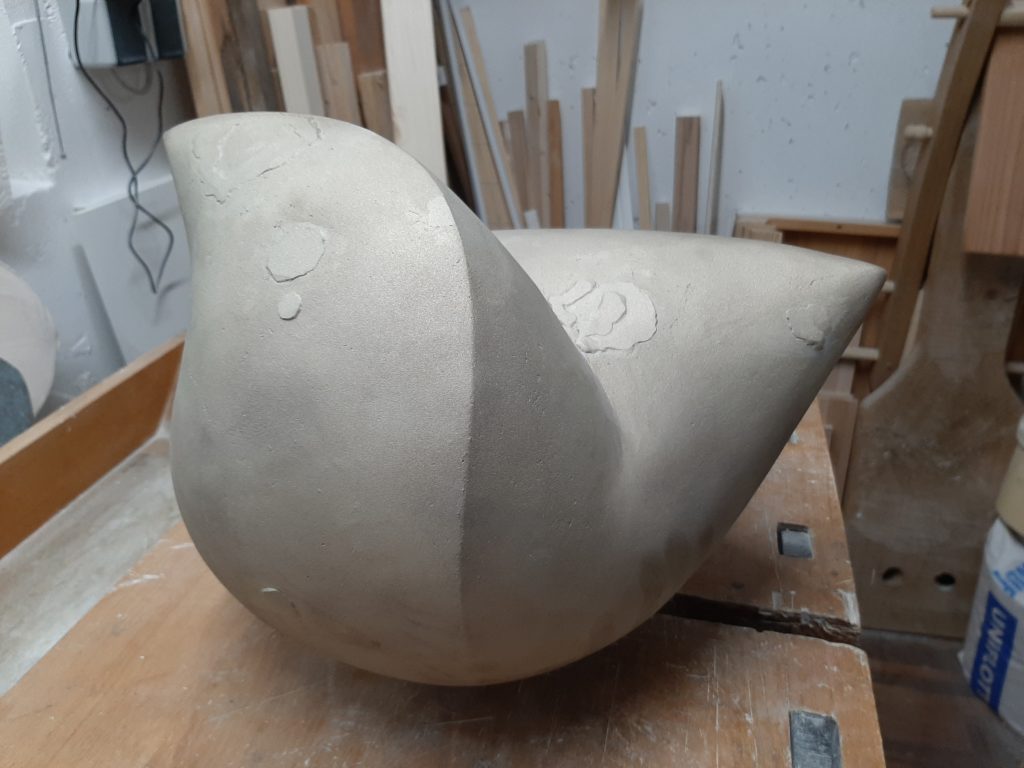
Raw casting of the sculpture
The production of a bronze cast is very complex. First, a wax model is created with the negative form. The sprues are attached to this from wax. Then the wax model is repeatedly dipped in a kind of thin clay soup and dried for several days. When the clay gets fired, the wax flows out, leaving a cavity in which the bronze can be poured.
Surface treatment of the bronze casting
After casting, the clay must be knocked off on the outside and inside. Holes have to be cut in a closed shape like this so that the clay on the inside can be removed. Then the holes are welded shut again. I took on the surface treatment of the bronze sculpture Two Points with file and sandpaper. I like to work by hand because it gives me a better feel for the smoothness and tension of the surface.
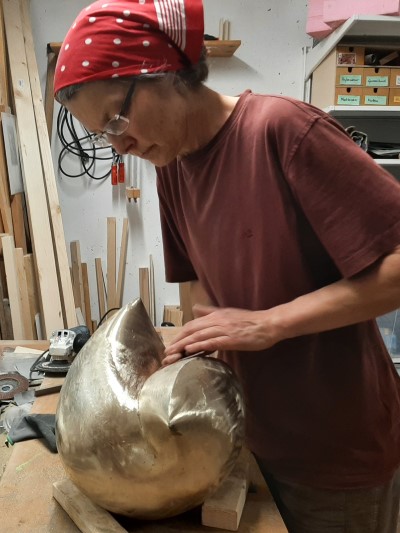
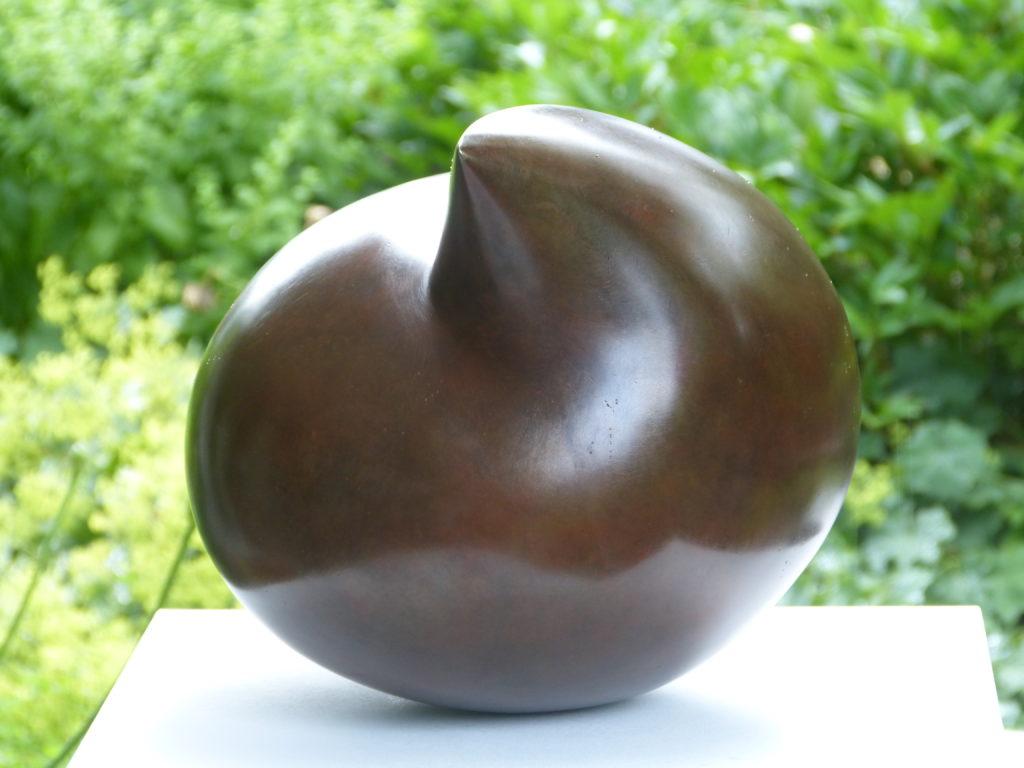
Patinating the bronze sculpture Two Points
For the final surface treatment, I bring the sculpture back to the foundry. Patinating is an art in itself. With the help of various chemicals, the bronze reacts and changes its color. In this case, the Art foundry Kollinger brought out a beautiful red-brown color.
